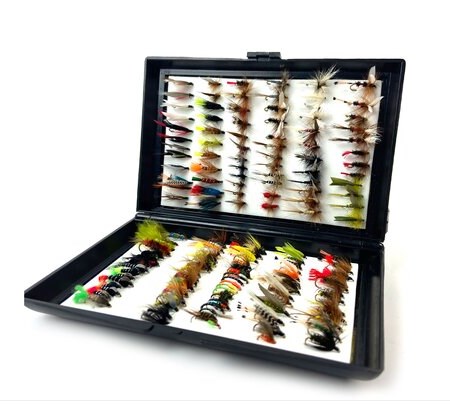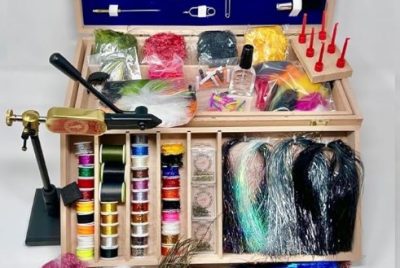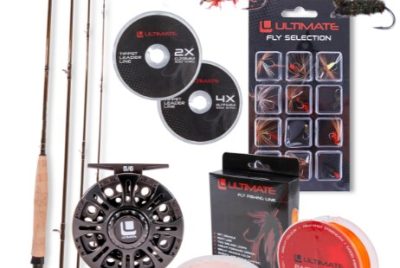Tailwaters Fly Fishing
Introduction
Hey there, fellow angler! If you’re like me and have a passion for fly fishing, you’ve probably heard the term “tailwaters” thrown around. But what exactly are tailwaters, and why are they such a hot spot for fly fishing enthusiasts? Grab your gear and let’s dive into the wonderful world of tailwaters fly fishing together!
What are Tailwaters?

First things first, let’s get on the same page about what tailwaters are. Simply put, tailwaters are the sections of rivers located immediately downstream from dams. These areas are known for their unique conditions, which create an ideal habitat for fish, particularly trout. The consistent release of water from the dam keeps the temperatures stable and oxygen levels high, making it a haven for both fish and anglers.
Why Fly Fishing in Tailwaters?
You might be wondering, why should I focus on tailwaters for my next fly fishing adventure? Well, there are a couple of compelling reasons. For starters, the abundance of fish is a major draw. Thanks to the stable environment, fish populations in tailwaters are often higher and healthier than in other river sections. Plus, the consistent water temperature means that you can find active fish year-round, regardless of the season.
The Best Tailwaters for Fly Fishing
Now that we’ve got you excited about tailwaters, where should you go? Some of the best tailwaters in the US include the Green River in Utah, the San Juan River in New Mexico, and the Madison River in Montana. If you’re up for some international travel, consider the Bow River in Alberta, Canada, or the Mataura River in New Zealand. Each of these spots offers a unique experience and a chance to catch some impressive fish.
Understanding the Ecosystem of Tailwaters
To truly master tailwaters fly fishing, it’s essential to understand the ecosystem. Tailwaters boast a rich variety of flora and fauna. Aquatic insects thrive in these environments, providing a steady food source for fish. You’ll also find that the unique conditions create specific plant life along the banks, contributing to a vibrant and diverse ecosystem.
Essential Gear for Tailwaters Fly Fishing
Let’s talk gear. Having the right equipment can make or break your tailwaters fly fishing experience. You’ll need a sturdy rod and reel, preferably one that’s versatile enough to handle different types of flies and techniques. Good quality waders and boots are a must, as tailwaters often have rocky and slippery bottoms. Don’t forget your flies! Nymphs, dry flies, and streamers are all essential, so stock up on a variety of patterns to match the local insect life.
Techniques for Success in Tailwaters

Success in tailwaters fly fishing comes down to technique. Nymphing is a popular method here, as many fish feed below the surface. Use weighted nymphs to get your fly down to where the fish are. Dry fly fishing can also be effective, especially during hatches when fish are rising to the surface. Streamer fishing, with its larger, more visible flies, can attract aggressive strikes from bigger fish lurking in deeper waters.
Reading the Water
One of the most important skills you can develop is reading the water. Look for areas where fish are likely to hold, such as behind large rocks, in deep pools, or near drop-offs. Pay attention to the flow of the water as well. Fish often position themselves in spots where they can conserve energy while waiting for food to drift by.
Seasonal Considerations
Tailwaters fly fishing can be productive year-round, but each season brings its own challenges and opportunities. In spring, rising water levels can make fishing tricky, but the abundance of food means fish are actively feeding. Summer offers stable conditions, but you might face more competition from other anglers. Fall is fantastic, with cooler temperatures and active fish preparing for winter. Winter can be tough, but the consistent water temperature in tailwaters means you can still find fish, especially on warmer days.
Common Mistakes and How to Avoid Them
Even seasoned anglers make mistakes, but you can avoid common pitfalls with a bit of preparation. One big mistake is not adjusting your techniques to match the conditions. Tailwaters can change rapidly, so be ready to switch from nymphs to dry flies or streamers as needed. Another mistake is overlooking the importance of stealth. Fish in tailwaters can be easily spooked, so move quietly and keep a low profile.
Conservation and Ethical Fishing Practices
As anglers, it’s our responsibility to protect the environments we enjoy. Practice catch and release whenever possible, and handle fish with care to ensure they can be released unharmed. Be mindful of the ecosystem and avoid trampling vegetation or disturbing wildlife. By following ethical fishing practices, we can help preserve these incredible habitats for future generations.
Local Regulations and Permits
Before you head out, make sure you’re familiar with the local regulations. Fishing laws can vary significantly from one area to another, and you’ll need the appropriate permits. Check with local authorities or visit their websites to get the most up-to-date information. It’s always better to be prepared than to face fines or other penalties for fishing without the proper permits.
Guided Tours and DIY Adventures

If you’re new to tailwaters fly fishing or just want to maximize your chances of success, consider hiring a guide. Local guides have invaluable knowledge of the area and can provide tips and techniques that you might not discover on your own. However, if you prefer a DIY adventure, do your research and plan ahead. There’s nothing quite like the satisfaction of finding and catching fish on your own terms.
Community and Resources
Fly fishing has a wonderful community of passionate anglers who are always willing to share their knowledge. Join online forums, local clubs, or social media groups to connect with other enthusiasts. There are also plenty of resources available, from books and magazines to online courses and videos, that can help you improve your skills and stay updated on the latest trends.
Conclusion
Tailwaters fly fishing is a thrilling and rewarding pursuit. The unique conditions of these waters create an ideal environment for fish and a fantastic challenge for anglers. With the right gear, techniques, and knowledge, you can enjoy some of the best fly fishing experiences of your life. So, what are you waiting for? Grab your rod, hit the water, and start making memories!
FAQs
- What is the best time of year for tailwaters fly fishing? The best time can vary depending on the specific tailwater, but generally, spring and fall offer the most consistent conditions and active fish.
- What type of flies work best in tailwaters? Nymphs, dry flies, and streamers are all effective. Match your flies to the local insect life for the best results.
- How can I find the best tailwaters near me? Check online forums, local fishing clubs, and guidebooks. Speaking with local fly shops and guides can also provide valuable insights.
- Are tailwaters suitable for beginners? Absolutely! While they can present challenges, tailwaters are a great place for beginners due to the high fish populations and consistent conditions.
- What should I do if I catch a fish in tailwaters? Practice catch and release by handling the fish gently, using barbless hooks, and releasing the fish quickly back into the water to ensure its survival.



